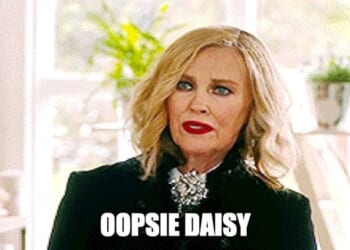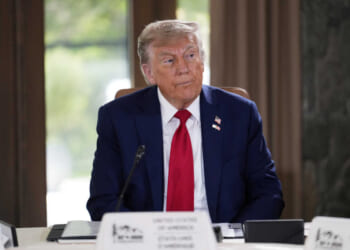James Yucel is Head of Campaigns at Onward and Director of Conservative YIMBY.
Picture it: post-war Britain. The Blitz rubble is still being cleared. Beveridge is the national conscience. And in Whitehall, a group of planners imagine a new kind of England—tidy, zoned, morally hygienic. In 1947, the Town and Country Planning Act passes into law, and with it, something oddly mystical is born: the Green Belt.
Its purpose was bureaucratic. Its effect was biblical. A ring of sanctified land, ensnaring the city like Dante’s circles of hell—each layer guarding against the unholy prospect of housing.
And so, the myth began. Over decades, the Green Belt wasn’t just policy—it became poetry. Politicians invoked it with reverence. Voters internalised it as common sense. Like the NHS, it became something bigger than itself: a symbol of all that was right, English, and green.
Only, of course, it isn’t green.
Not in the way most people think. Not in the buttercup-and-bramble, Emma Thompson-reading-a-sonnet kind of way. A surprising amount of Green Belt land is not rolling hills, but derelict car parks, abandoned petrol stations, and muddy fields next to B&Q depots. It is a Potemkin countryside—untouchable not because it’s beautiful, but because it’s been branded as such.
And branding, as any salesman worth their salt will tell you, is everything.
This is, quite simply, the greatest political marketing trick of the last hundred years. Our political class has convinced an entire nation that to touch the Green Belt is to desecrate Albion itself. It is a place that exists more in Countryfile than on country maps—less a real landscape, more a cultural hallucination.
There are few political sleights of hand more potent. Here is land you may not walk on. May not live. May not touch. But you must uphold it. It is zoned into sanctity. Like the lawn at King’s: step foot on it and a panjandrum will no doubt emerge, blinking from high windows, to remind you—gently, but firmly—that tradition outranks need.
And so Britain chokes.
Because here, in 2025, we are a country that cannot grow. Not upwards. Not outwards. Not fast enough to make our wages rise or our cities breathe. Britain has banned building—politically, spiritually, almost theologically. And the Green Belt is the high altar.
In London, we have land within walking distance of a Tube station that’s off-limits. In Oxford and Cambridge, we are told that growing the world’s best research clusters would upset the view from a layby. In the Home Counties, thousands of acres lie dormant—not wild, not productive, just fenced-off symbols of legislative lockjaw.
And it’s not just housing. It’s energy. Transport. Investment. Britain today is a country where you could open a vape shop next to a vape shop next to a vape shop—but try building a data centre in Hertfordshire and you’ll need fourteen surveys, three consultations, and a papal blessing.
Everything is expensive because everything is forbidden. We have constructed a legal and cultural system in which economic dynamism is framed as vandalism.
No wonder we are poorer than we should be. And no wonder we feel it. Britain today is not in recession but in managed decline—a kind of genteel sclerosis, padded with waitlists, debt, and low expectations. Our productivity has flatlined. Our energy costs are continental. And our politics is paralysed by the fear of offending Middle England’s imagined view out the window.
Meanwhile, France, hardly a beacon of laissez-faire, has quite literally outbuilt us by miles. More homes. More tramways. More energy. More ambition. Because, for all their strikes, white flags and slow lunches, the French do not treat infrastructure as sacrilege. They do not tell a generation that their only housing options are to inherit or emigrate.
The Green Belt is not the only reason for our national decadentia. But it is emblematic. It is how a society memorialises a mid-century aesthetic and mistakes it for a moral principle. It is how we end up with a housing shortage and still pat ourselves on the back for preserving “nature”
—even when that nature is a soggy plot behind a Greggs.
There is an obvious political trap here. No one wants to be the first to say it plainly. Reform won’t touch it—they’re too busy selling nostalgia. Labour talk a good game on housing – and credit to the Mayor of London for his recent intervention – but they’re also pushing nutrient neutrality rules that will make it harder than ever to build. Don’t get me started on the Liberal Democrats and Greens—the high priests of NIMBYism.
And the Conservatives?
Well, we wrapped the Green Belt in bunting and called it Burke. But there are flickers of change. Conservative YIMBY—of which, in the spirit of shameless self-promotion, I am the Director—launched recently to a packed room of young, enthusiastic professionals determined to challenge this orthodoxy.
If the party of homeownership, progress, and enterprise is to have a future, it must finally confront its past – even if that means ruffling a few feathers in Barnet—where some continue to defend every hedge and hedgerow like it’s the last stand at Dien Bien Phu. It must admit that the sepia-toned noose of halted ambition, while once well-meaning, is now the physical embodiment of national stagnation.
The Green Belt is not sacred. It is not natural. It is not even very green. It is a 20th-century administrative convenience that has become a 21st-century barrier to prosperity. It is time to redraw it—rationally, strategically, and honestly.
The Green Belt told a beautiful story. It’s time we wrote a better one.




![‘It’s a Recipe for a Hundred Years of National Dominance’: Stephen Miller [WATCH]](https://www.right2024.com/wp-content/uploads/2025/05/Stephen-Miller-Completely-Obliterates-CNN-Host-Over-Her-Illegal-Immigration-350x250.jpg)

![Trump Posts Hilarious Pope Meme, Leftists Immediately Melt Down [WATCH]](https://www.right2024.com/wp-content/uploads/2025/05/Trump-Posts-Hilarious-Pope-Meme-Leftists-Immediately-Melt-Down-WATCH-350x250.jpg)



![Mother Breaks Silence After Three Daughters Killed During Father’s Custody Visit, Memorial Held [WATCH]](https://www.right2024.com/wp-content/uploads/2025/06/Mother-Breaks-Silence-After-Three-Daughters-Killed-During-Fathers-Custody-350x250.jpg)





